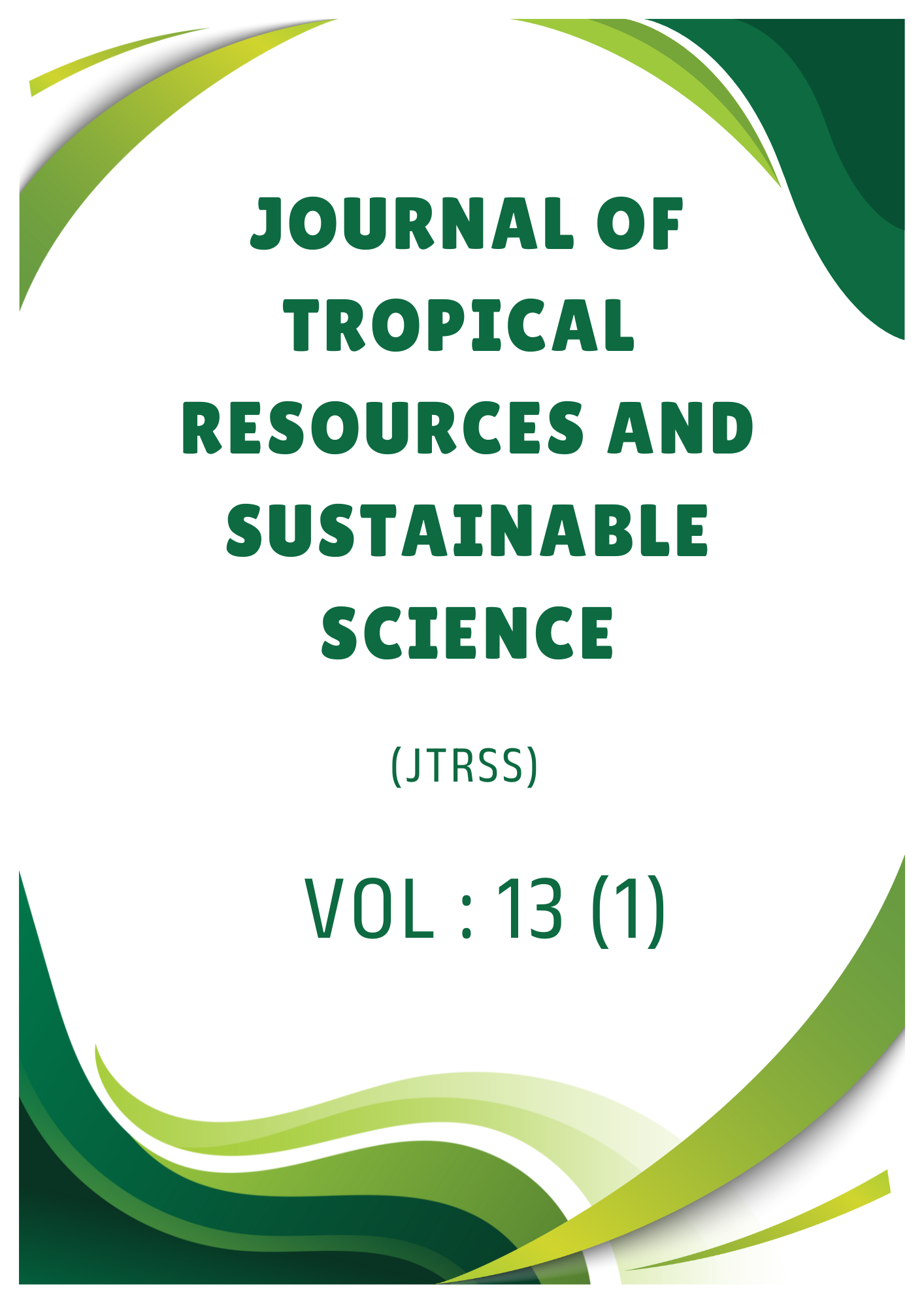Productivity and nature of compatibility in mixed pasture of Brachiaria decumbens cv. Kluang comel and Stylosanthes guianensis CIAT 184 under different planting ratio
DOI:
https://doi.org/10.47253/jtrss.v13i1.1324Keywords:
grass, legume, mixture, planting ratio, yieldAbstract
This study aimed to determine the productivity and compatibility between Brachiaria decumbens cv. Kluang Comel and Stylosanthes guianensis CIAT 184 under different planting ratios. The experiment consisted of five treatments with different planting ratios of B. decumbens and Stylo in each treatment. The forages were harvested manually from each poly bag individually after 7 weeks from the first cut back. The samples were analyzed for crude protein, neutral detergent fiber, acid detergent fiber, and acid detergent lignin. The mixture of B. decumbens and Stylo at a 50:50 planting ratio produced the highest yield per hectare. The leaf percentage of grass was the highest in the mixture of B. decumbens and Stylo at 75:25 planting ratio, while the leaf percentage of legume was the highest in the mixture of B. decumbens and Stylo at 75:25 planting ratio. Higher crude protein content was observed in the 50:50 and 25:75 planting ratios due to the higher population of legume. The calcium percentage was the highest at the mixture of B. decumbens and Stylo at 25:75 planting ratio. The most preferable planting ratio is 50:50 of Brachiaria decumbens cv Kluang Comel and Stylosanthes guianensis CIAT 184 mixture.







